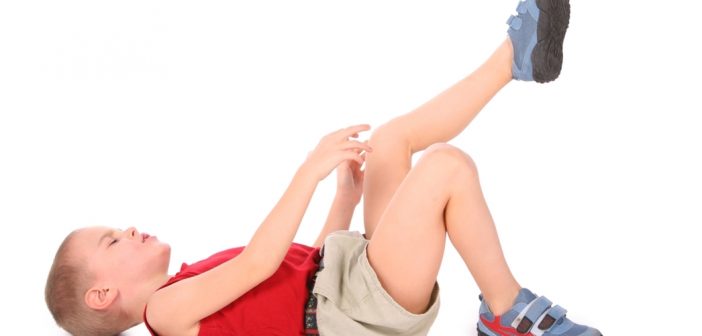If you have young children, you may have heard them complain to you about leg pain, often in their shins. When it comes to leg pain in children, you may be wondering if it’s due to shin splints or growing pains. It’s not always simple to decipher your child’s symptoms, so it is always recommended that you consult a professional children’s podiatrist if you have concerns about your child’s leg pain.
So what’s the difference between shin splints and growing pains?
Growing Pains
There are many different theories on growing pains, and some medical practitioners go so far as to doubt the term altogether. Children usually do most of their growing during puberty so you would expect them to experience more leg pain during this growth spurt period. However, growing pains are most often associated with younger children, from toddler age to around 7 or 8 years old.
We also know that young kids are often very active – have you ever tried getting a 5 year old not to run around the park like a lunatic? Growing pains have also been attributed to excessive exercise so if your child experiences pain after a long day of walking or being out and about, this may be a factor in how their legs feel at the end of the day.
Leg pain could also be a result of the type of activity your child is doing. Weight bearing activities such as jumping and running have more of an effect than non-weight bearing activities such as swimming.
Poor quality footwear can also contribute to leg pain in children (and adults). Make sure you choose the right footwear for your child to avoid unnecessary pain or even injuries for your child. A shoe needs to fit well, have a good midfoot stabiliser and a firm heel counter to provide heel and ankle support.

Shin Splints
Unlike growing pains, shin splints are a medical condition that can affect both children and adults alike. It’s often seen in younger athletes who regularly undertake strenuous physical activities.
Shin splints occur when the muscles that are attached to the inner or outer side of the shin bone become inflamed. Symptoms can include pain around the shin bone which is usually worse at the start of any physical activity like running. If ignored, the pain can occur at any time, not just when doing physical activities – this happens after significant damage has been sustained.
There are some ways you can reduce the pain of shin splints. Firstly is to only undertake gentle exercise, preferably non-weight bearing ones such as swimming. This helps to muscles to exercise but without the additional weight load on the lower leg.
As a short term solution, ice packs can help to reduce the muscle inflammation. Apply an ice pack regularly over 2-3 days and see if it helps.
Make sure you are wearing supportive shoes that are not contributing to your leg pain. In some cases, orthotics may be recommended by your podiatrist.
If your child is complaining of leg pain and you are not sure what the cause may be, consult a trusted children’s podiatrist and get a professional opinion. A specialist children’s podiatrist will be able to determine the symptoms and cause of your child’s pain and provide you with a personalised treatment plan.

Article Author: Rudo Makuyana is one of the podiatrists at The Foot Hub in Sydney. Rudo is passionate about foot health and treating patients holistically – not just the individual problem. Originally from Zimbabwe, she completed her Bachelor of Podiatric Medicine at the University of Western Australia (School of Surgery) in 2011. She now practices in her foot clinic in Alexandria, Sydney and also volunteers and advocates for the rights of the world’s poor.


1 Comment
Well, hello! This particular penny has not dropped with many GPs. As many naturopaths and podiatrists know, many are the YEAST and FUNGAL diseases that cause chronic diseases that MDs even specialists refuse to treat. You cannot get a long course of Nystatin/Itraconazole (sporanox) out of a doc for love or money. This Nystatin (2million units per day)/Itraconazole (200mg per day) combination cures Dyshidrosis, IBS, asthema, Crohns, and some eczemas and psoriasis, and the occasional case of acne. GPs will tell you that fungal diseases only occur in immune compromised individuals. But if you investigate, you will find all yeasts and fungi live on glucose. We eat way too much glucose nowadays. Podiatrists know better. Unfortunately only in the USA do podiatrists have prescribing rights. Fortunately, many of these anti-fungal medications are over the counter in South America and the Middle East.